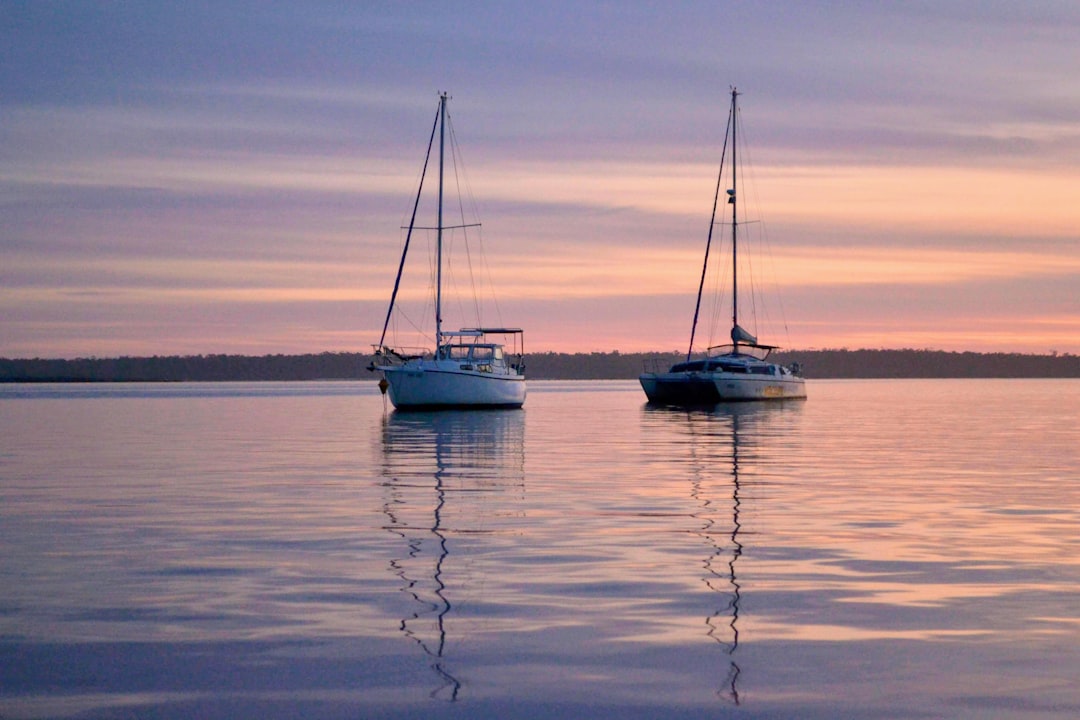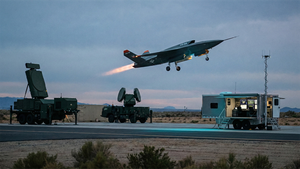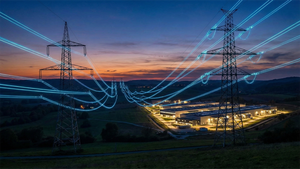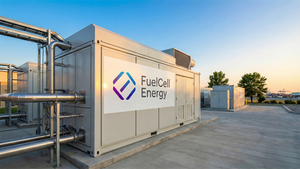 Photo from Unsplash
Photo from Unsplash
Originally Posted On: https://securespace.com/blog/different-types-of-boats/
Different Types of Boats: 14 Common Boats (Pros & Cons)
Exploring the different types of boats is essential if you are considering purchasing one.
Determining your usage, estimated time spent on the water, and the number of passengers is crucial to choosing the best type of boat for you.
After identifying your primary needs, you can begin exploring the diverse boating options. Hoist the sails and set sail for your boating adventure.
Continue reading our SecureSpace Self Storage team’s guide on all the different types of boats and find which is suitable for you today.
Discover the Different Types of Boats
In the vast and diverse world of maritime vessels, understanding the different types of boats is crucial for enthusiasts, professionals, and maritime students alike.
Before diving into the specifics below, having a high-level overview of the different types of boats is helpful.
In general, boats fall into three different categories:
1. Unpowered or Man-Powered Boats
The category of unpowered boats, including rafts, gondolas, and kayaks, represents the most fundamental form of watercraft. These vessels are either propelled manually or at the mercy of natural water currents.
They are integral in basic maritime design studies and are often used in environments where boaters prefer simplicity and minimal environmental impact.
Their use spans recreational activities and essential transport means in certain geographic regions.
2. Sailboats
Sailboats, propelled by the harnessing of wind power, are a testament to the beauty of harnessing natural forces and human engineering. This category ranges from small, personal crafts to larger, crewed vessels.
Sailboats are often the focus of studies in aerodynamics, hydrodynamics, and environmental efficiency. They hold a significant place in recreational sailing and competitive racing, offering a range of complexities for sailors of different skill levels.
3. Motorboats
The motorboat category encompasses many boats powered by internal combustion engines.
Motorboats are varied in their application, from personal leisure crafts to specialized vessels such as fishing boats and patrol boats, each serving distinct purposes and equipped with technology suited to their specific use.
This overview provides a foundational understanding of the primary types of boats. Each category demonstrates unique characteristics, design principles, and uses, reflecting the diversity and ingenuity present in modern maritime practices.
Now that you have these categories in mind let’s dig into the different types of boats.
The 14 Main Types Of Fishing, Sailing & Sports Boats
Fishing, sailing & sports boats come in various shapes and sizes, each designed to accommodate different styles of boats and environments.
Whether you’re a seasoned angler or a beginner, choosing the right type of fishing, sailing, or sports boat can make all the difference in the world.
Let’s dive into some of the most common boats used today.
1. Aluminum Fishing Boats (Most Affordable)
If you’re a fisherman who values functionality and affordability over fancy features, then an aluminum fishing boat might be just what you need. These no-frills boats are slender, streamlined, and easy to operate, making them popular for novice and experienced fishermen.
Fast Facts
Here are some quick facts about aluminum fishing boats:
- Maximum passenger load: 8
- Length: 8-24 ft
Common Uses
Aluminum fishing boats are versatile and can be used for a variety of activities, including:
- Freshwater fishing
- Duck hunting
- Day cruising
Where Aluminum Fishing Boats Are Used
Aluminum fishing boats are typically used in shallow, freshwater areas such as:
- Lakes
- Rivers
- Inlets
Pros:
- Aluminum fishing boats are straightforward and uncomplicated, ideal for families and novice boaters.
- Aluminum fishing boats are relatively affordable compared to other boats.
- These boats are built to withstand wear and tear, making them a wise long-term investment.
- Aluminum fishing boats are easily transported and can be launched from various locations.
- The V-shaped hull of aluminum fishing boats makes them agile and easy to navigate through the water.
Cons:
- The no-frills design of aluminum fishing boats means they lack many bells and whistles found on more expensive models.
- The lightweight construction of these boats can make for a bumpy ride in choppy waters.
- Aluminum fishing boats usually have minimal amenities, such as seating and storage.
2. Bass Boats (Best For Bass Fishing)
When catching largemouth bass, there’s no better boat than a bass boat. It’s one of the most common boats for fishermen. These specialized fishing vessels are designed to maximize your chances of landing the big one, with features like high-horsepower trolling motors, ample casting space, and built-in storage for the tackle.
Fast Facts
Here are some quick facts about bass boats:
- Maximum passenger load: 3
- Length: 16-25 ft
Common Uses
- Bass boats are primarily used for freshwater fishing, focusing on catching largemouth bass.
- They are often seen on inland lakes and rivers, where shallow waters and fish are plentiful.
Where Bass Boats Are Used
Bass boats are typically used in freshwater areas such as:
- Inland lakes
- Rivers
Pros:
- Bass boats include an aerated onboard tank to keep your catch alive and healthy until you can get them to shore.
- You’ll have everything you need, with built-in storage for fishing tackle and other equipment.
- Many bass boats come with outboard engines, which frees up space on board for additional seating.
- With high-horsepower trolling motors, bass boats are fast and agile, making it easy to move around and find the best fishing spots.
Cons:
- Bass boats can be costly, with high fuel costs and the need for specialized equipment and accessories.
3. Bay Boats (The Perfect Choice for Shallow Coastal Water)
Bay boats are an excellent option for those who want to fish or explore shallow coastal waters. These boats are shorter and have higher sides and deeper hulls than flats boats, allowing a smoother ride in choppy waters. With the help of a pole, riders can navigate through shallow waters from the elevated platforms in the back of the boat.
Fast Facts
Here are some fast facts to know about bay boats:
- Maximum passenger load: 5
- Length: 17-25 ft
Common Uses
Bay boats are versatile and can be used for a variety of activities, including:
- Freshwater fishing
- Saltwater fishing
- Water sports
Where Bay Boats Are Used
Bay boats are designed for use in shallow coastal waters, including:
- Bays
- Estuaries
- Shallow offshore waters
Pros:
- Bay boats have deeper hulls allowing a smoother ride in choppy waters.
- Many bay boats come with built-in live wells, perfect for holding live fish.
- The outboard motor on a bay boat can be lifted, making it easier to navigate through shallow water.
- Bay boats have fiberglass bottoms that are highly resistant to abrasive saltwater.
Cons:
- Bay boats must be better suited for larger bodies of water due to their more temporary profile.
- Bay boats have open decks, which offer no protection from the sun, wind, or rain.
- Bay boats have few luxuries on larger vessels, such as cabins or bathrooms.
4. Bowrider Boats (Best For Families)
Bowrider boats are popular among families for their expansive bow area and ample seating behind the cockpit. With their V-shaped design, they can easily navigate different water conditions. Let’s look at some of the fast facts, common uses, and pros and cons of bowrider boats.
Fast Facts
Here are some quick facts about bowrider boats:
- Maximum passenger load: 10
- Length: 16-35 ft
Common Uses
Bowrider boats are versatile and can be used for a variety of activities, including:
- Water sports
- Fishing
- Day cruising
Where Bowrider Boats Are Used
Bowrider boats are typically used in a variety of locations, including:
- Shallow saltwater bays
- Lakes
- Oceans
Pros:
- Bowriders are ideal for water sports like skiing and wakeboarding due to their ample seating and swim platforms.
- Bowriders are relatively lightweight and easy to transport.
- The V-shaped design of the bottom will enable bowriders to move quickly through the water.
- Bowriders are generally less expensive than different types of power boats, resulting in lower insurance and maintenance costs.
Cons:
- Bowriders can be bumpy in choppy water conditions due to their smaller size.
- Bowriders need more protective space from harsh weather, and their smaller dimensions make them less suitable for overnight trips.
5. Cabin Cruisers ( Most Spacious & Comfortable)
Cabin cruisers are spacious and comfortable power boats with amenities like a sleeping area, kitchen, and small toilet. They are perfect for overnight trips due to their ample space and smooth ride in all water conditions. Let’s take a closer look at some of the fast facts, common uses, and pros and cons of cabin cruisers.
Fast Facts
Here are some quick facts about cabin cruisers:
- Maximum passenger load: 6-12
- Length: 26-75 ft.
Common Uses
Cabin cruisers are versatile and can be used for a variety of activities, including:
- Overnight and day cruising
- Water sports
- Fishing
Where Cabin Cruisers Are Used
Cabin cruisers are typically used in a variety of locations, including:
- Inland lakes
- Rivers
- Oceans
Pros:
- One of the most comfortable boats to spend time on.
- Great for extended trips, especially with sleeping and cooking facilities on board.
- A wide, V-shaped hull offers excellent stability and maneuverability in all water conditions.
- The covered cabin protects from the elements.
- Can navigate in choppy water.
Cons:
- More expensive than other types of power boats, significantly larger models.
- Difficult to transport due to their size.
- Slower than other power boats, significantly larger models.
6. Center Console Boats (Most Reliable Option For Sport Fishing)
Center console boats are a popular choice for sport fishing enthusiasts due to their reliable construction and ability to navigate through rough waters. These boats are perfect for offshore fishing with a deep V-hull and durable outboard motors. Let’s look at the features, uses, and pros and cons.
Fast Facts
Here are some quick facts about center console boats:
- Maximum passenger load: 5-8
- Length: 18-55 ft
Common Uses
Center console boats are primarily used for:
- Saltwater and freshwater fishing
- Day cruising
Where Center Console Boats Are Used
Center console boats are primarily used in the following locations:
- Offshore ocean waters
- Lakes
- Rivers
Pros:
- The deep V-hull and outboard motors make center console boats ideal for navigating choppy waters.
- The center console provides shelter from the elements, making this boat type a good choice for fishing in inclement weather.
- These boats are designed with ample storage space to hold all the necessary fishing equipment.
- The smaller size and lightweight construction of center console boats make them easily transported on a trailer.
- Center console boats are built to withstand the wear and tear of fishing and rough waters.
Cons:
- Center console boats are designed primarily for fishing, so they only come equipped with luxury features on other boats.
- The durability and functionality of center console boats come with a higher price tag than different fishing boats.
7. Deck Boats (Perfect Choice To Host Friends & Family)
Deck boats are popular for families due to their increased seating capacity and flat hulls, making them stable in the water. With ample storage and seating, deck boats are perfect for a day with family and friends on the water.
Fast Facts
Here are some quick facts about deck boats:
- Maximum passenger load: 8-12
- Length: 18-28 ft
Common Uses
Deck boats are used for:
- Water sports
- Freshwater fishing
- Day cruising
Where Deck Boats Are Used
Deck boats are primarily used in the following locations:
- Lakes
- Oceans
- Bays
Pros:
- With room for 8-12 passengers, deck boats are perfect for families and larger groups.
- The flat hulls of deck boats make them more durable and ideal for families with small children.
- Ample storage and seating.
Cons:
- It can be more expensive than other cruisers like the pontoon.
- An unprotected seating area limits the boat style to lovely weather days.
8. Dinghy Boat (Add Some Versatility)
Dinghies, or rowing or inflatable boats, are small and versatile vessels commonly used as helpers to larger boats. These boats are designed to maneuver easily through tight and shallow areas, making them famous for recreational use, fishing, and workhorse vessels.
Fast Facts
Here are some quick facts about dinghy boats:
- Maximum passenger load: 5
- Length: 6-8 ft
Common Uses
Dinghy boats are incredibly versatile and can be used for a wide range of activities, including:
- Recreational use
- Companion boats
- Workhorse vessels
- Fishing
Where Dinghy Boats Are Used
Dinghy boats can be used in a variety of water bodies, including:
- Lakes
- Shallow water bodies
- Rivers
Pros:
- Dinghy boats are simple and require no specialized skills, making them ideal for beginners.
- Dinghy boats are generally more affordable than other boats, making them accessible to a broader audience.
- Dinghy boats’ flat bottom allows easy movement through shallow waters without becoming stuck.
- Inflatable dinghies can be deflated and stored in smaller homes or storage spaces.
- Dinghies can be equipped with sails to provide a more leisurely cruise.
Cons:
- Dinghies often need to be towed by larger vessels when traveling long distances.
- Dinghy boats typically do not come with extras like seating or storage.
9. Fish & Ski Boats (Best For Fishing & Water Skiing)
If you’re a water enthusiast who wants to try multiple activities on the water, then a fish and ski boat might be the perfect fit. These common boats are designed with features that can be easily added or removed to accommodate different boat water activities, making them a popular choice for families who enjoy watersports and fishing.
Fast Facts
Here are some quick facts about fish and ski boats:
- Maximum passenger load: 8
- Length: 16-22 ft
Common Uses
Fish and ski boats are versatile and can be used for a variety of activities, including:
- Salt and freshwater fishing
- Water sports
- Day cruising
Where Fish and Ski Boats Are Used
Fish and ski boats can be used in a variety of environments, including:
- Lakes
- Oceans
- Rivers
- Bays
Pros:
- Fish and ski boats are perfect for families who enjoy multiple water activities.
- These boats can be easily towed on a trailer and launched from various locations.
- Fish and ski boats have features that can be easily added or removed, making them adaptable to different water activities. They also have ample storage space for gear and equipment.
Cons:
- Fish and ski boats, such as cabin cruisers, may not provide less security than other boats.
10. High-Performance Boats (The Ultimate Adrenaline Rush)
If you’re an adrenaline junkie who loves speed and style, a high-performance boat may be just what you need. These boats are designed for lightness, speed, and agility, perfect for racing, cruising, and other high-performance water sports.
Fast Facts
Here are some quick facts about high-performance boats:
- Maximum passenger load: 6
- Length: 2-50 ft
Common Uses
High-performance boats are incredibly versatile and can be used for a variety of activities, including:
- High-performance sports
- Cruising
- Racing
Where High-Performance Boats Are Used
High-performance boats are typically used in a variety of waterways, including:
- Coastal beaches
- Rivers
- Lakes
Pros:
- High-performance boats are a blast, offering an exhilarating ride that’s hard to beat.
- These boats are incredibly versatile and can be used for various activities, from cruising to racing.
- High-quality boats will turn heads on the water with their sleek and streamlined design.
Cons:
- High-performance boats are often designed with speed in mind, so they may have limited seating for passengers.
- These boats are typically more costly than others due to their high-performance engines and specialized construction.
- High high-performance boats’ high-horsepower engines can consume a lot of fuel, leading to higher operating costs.
- Due to their high speed and increased risk of accidents, high-performance boats can come with higher insurance rates.
11. Pontoon Boat (Versatility & Comfortability)
A pontoon boat may be the perfect choice if you’re looking for a common boat that can provide a comfortable and versatile cruising experience. With ample seating and standing areas, pontoon boats are well-suited for relaxed cruising and various water sports and activities.
Fast Facts
Here are some fast facts about pontoon boats:
- Maximum passenger load: 25
- Length: 16-30 ft
Common Uses
Pontoon boats are highly versatile and can be used for a wide range of activities, including:
- Cruising
- Water sports
- Fishing
Where Pontoon Boats Are Used
Pontoon boats are best suited for inland bodies of water, such as:
- Lakes
- Rivers
- Small bodies of water
Pros:
- Pontoon boats are relatively inexpensive compared to other boats.
- Pontoons can be towed on a trailer, making them easy to transport.
- Pontoon boats are easy to use, even for novice boaters, and are easy to operate.
- Pontoons can be used for various activities, making them great all-purpose boats.
- Pontoons can be stored on a trailer, making them easy to store in a garage or other storage space.
Cons:
- Pontoon boats are slower than other boats, making them less suitable for water skiing and wakeboarding.
- Pontoon boats must handle rough water and different types of boats, making them less ideal for open-water cruising.
- Outboard engines can be loud, making it difficult to have a conversation or enjoy the sound of the water.
- Pontoons lack protection from extreme weather conditions, making them less suitable for boating in inclement weather.
12. Sailboats (Best For Competition & Recreation)
Sailboats are a popular choice for both recreational boaters and competitive sailors. With various sizes, different styles of boats, and features, a sailboat suits every need. In this article, we’ll look at the different types of sailboats, their common uses, and their pros and cons.
Fast Facts
Here are some quick facts about sailboats:
- Maximum passenger load: Depending on the model, anywhere from 1-4
- Length: 7-70 ft
Common Uses
Sailboats are versatile vessels that can be used for a variety of activities, including
- Daysailing
- Cruising
- Racing
Where Sailboats Are Used
Sailboats can be used in a variety of bodies of water, including:
- Lakes
- Oceans
- Bays
Pros:
- Environmentally friendly
- Easy to transport
- Can achieve high speeds for racing
Cons:
- Sailing requires skill and experience; steering a sailboat can be more challenging than operating a motorboat.
- Sailboats can be more expensive than motorboats due to their construction and maintenance costs.
- Sailboats require specific maintenance to keep them in good condition, and storing them can also be costly.
- Sailing relies on wind power, which can be unpredictable and may result in longer travel times.
- Sailboats require deeper water and wider channels than other boats, making them less versatile in certain bodies of water.
13. Tow Sports Boats (Most Versatile Power Boat)
Tow sports boats, or ski/wake/surf boats, are the perfect match for individuals and families who love to ride choppy waves. These sleek power boats are versatile and have built-in accessories for skiing, wake surfing, and wakeboarding.
Fast Facts
Here are some quick facts about tow sports boats:
- Maximum passenger load: 14
- Length: 18-28 ft
Common Uses
Tow sports boats are designed for water sports and day cruising. Some of the most common uses include:
- Water sports
- Day cruising
Where Tow Sports Boats Are Used
Tow sports boats can be used in a variety of bodies of water, including
Oceans
- Bays
- Rivers
- Lakes
Pros:
- Tow sports boats come with hidden propellers, which are safer for swimmers and water sports enthusiasts.
- These boats come equipped with ballasts and a tower for each sport, making it easy to switch between different activities.
- Tow sports boats are designed for various activities, making them the ultimate versatile powerboat.
Cons:
- The flat hulls of these boats make them difficult to navigate on rough waters.
- Tow sports boats are more expensive than other types of sports boats.
- These boats have high fuel consumption, which can add up quickly over time.
14. Trawlers (The Perfect Boat For Overnight Cruises)
If you’re a boating enthusiast who enjoys extended cruising or living on the water, consider investing in a trawler. Trawlers are designed for comfort and functionality, and their large cabins and amenities make them an excellent choice for overnight and day cruising.
Fast Facts
Here are some quick facts about trawlers:
- Maximum passenger load: 6-8
- Length: 26-50 ft.
Common Uses
Trawlers are versatile and can be used for a variety of activities, including:
- Overnight and day cruising
Where Trawlers Are Used
Trawlers can be used in various waterways, including
- Lakes,
- Oceans,
- Intercoastal waterways
Pros:
- The round displacement bottoms of trawlers provide a smooth ride, even in rough waters.
- Trawlers are designed for extended cruising and living on the water, so they come with many amenities, including sleeping areas, kitchens, and bathrooms.
- Trawlers have lower-horsepower machines than other cruisers, so they consume less fuel and are more fuel-efficient.
Cons:
- Trawlers are not known for their speed and are generally slower than other boats.
- The extra amenities on trawlers require more maintenance and upkeep than other boats.
Thanks For Reading!
We hope this guide on the different types of boats helps you in your purchasing decision.
If you find yourself in need of a place to store your boat for the short or long term consider renting out a spot at one of our local SecureSpace Self Storage facilities today.




